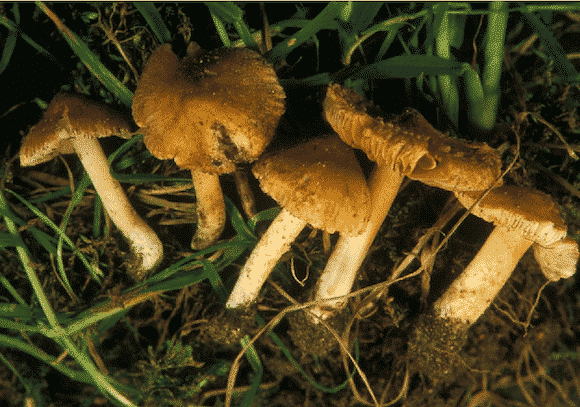
Inocybe aeruginascens Magic Mushrooms
Inocybe aeruginascens: Background
Inocybe aeruginascens magic mushrooms were first described on June 15th 1965 in Hungary by I. Ferencz. A minimum of 23 unintentional intoxications, hallucinogenic in nature, were reported with this mushroom in 1982 by Drewitz and Babos. This lead Drewitz and German chemist Jochen Gartz to discover the first source of psilocybin in any Inocybe species. Aside from the presence of psilocybin, psilocin, and baeocystine, Gartz named a newly discovered substance aeruginascin after the name of the mushroom species, which is one of only two known natural sources. Little is known about the effects of aeruginascin but it's hypothesized to play a roll in a temporary paralysis known as Wood Lovers Paralysis. Though there are no known deaths from Inocybe aeruginascens, edibility is not yet conclusive.
Inocybe aeruginascens: Habitat
Inocybe aeruginascens magic mushrooms grow in moist, sandy soils around poplar, linden, oak and willow trees. It has been reported in central Europe and the west coast of North America, preferring temperate areas.
Inocybe aeruginascens: Taxonomy/Naming
Genera
Inocybe aeruginascens
Species Name
aeruginascens
Sub Species
aeruginascens
Common Name
Inocybe aeruginascens: Physical Description
Pileas
Small, conic to convex caps that possess a small dark umbo and incurved edges when young, becoming planar upon ageing. Light yellowish-brown with blue-green staining.
Gills
Gills are narrowly attached to the stem to nearly free, crowded, and range from pale brown to grayish-brown to tobacco brown.
Spore Print
Clay brown
Spores
Clay brown
Stipe
Stem is slender but solid, equally wide, and pale gray becoming blue-green from the bottom up. A partial veil disappears with age and it has an unpleasant soapy odor.

Comments